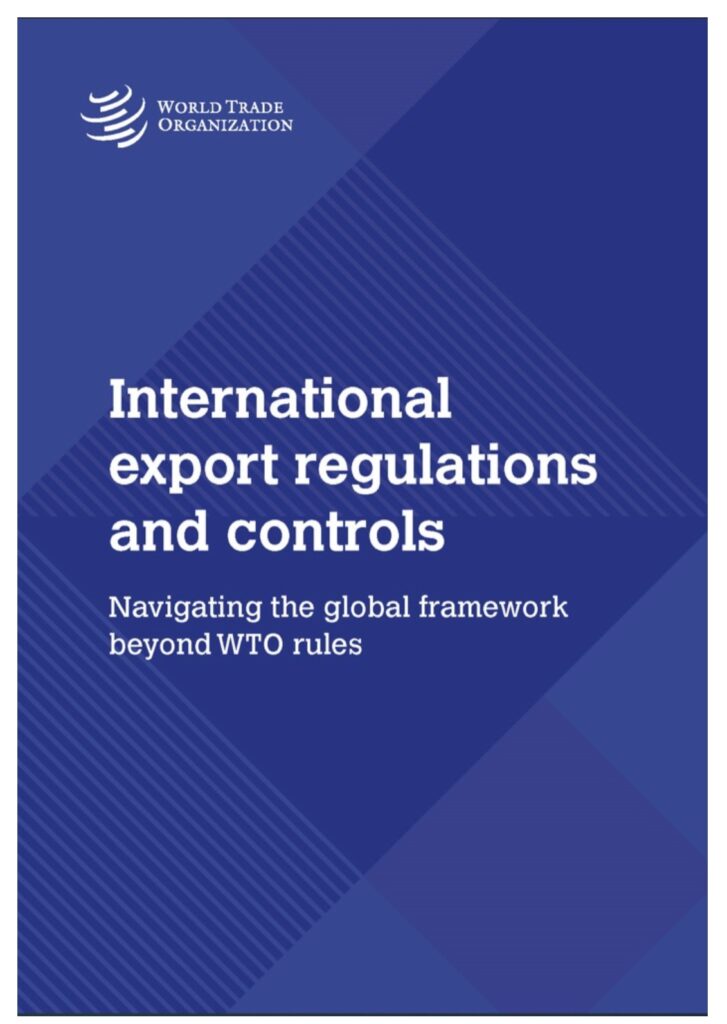New WTO publication provides insights into the world of export regulations and controls
A new publication launched at the Public Forum on 15 September provides insights into how WTO members have used different international agreements and conventions beyond the WTO as the basis for imposing export regulations aimed at ensuring objectives such as environmental protection, hazardous waste management, weapons control and combatting illegal drugs trade.

Ensuring that international trade in sensitive or dangerous products takes place safely requires that WTO members work together in enforcing different types of controls, some of which have to be enforced by the exporting members. Some of these export regulations and controls have been developed over many years of international cooperation and are embodied in a large number of international agreements and conventions, and many WTO member are party to them.
As a result, WTO members utilize a wide range of measures, such as prohibitions, export licences, regulations and other controls, to assist in risk management and regulating trade in controlled and sensitive goods for fulfilling specific environmental objectives, managing hazardous wastes and chemicals, combating illicit drugs and harmful substances, promoting international peace and weapons controls.
The new WTO publication explores for the first time how these export-related frameworks developed beyond the WTO operate in practice and how they are linked to the multilateral trading system.

“The book is intended to serve as a guide for policymakers, government officials, academia and members of the public with an interest in the areas covered,” said Suja Rishikesh Mavroidis Director of the WTO’s Market Access Division, in a foreword to the publication. “By fostering a better understanding of the existing international agreements regulating exports and how they link to the multilateral trading system, the WTO can help to strengthen global cooperation, promote transparency and perhaps even inspire future agreements seeking to strike a balance between advancing international trade and protecting the global community against potential risks”, she said.
To ensure transparency regarding these measures, WTO members are required to notify every two years all quantitative restrictions (QRs) in force. For example, several WTO members have notified measures such as prohibitions, restrictions or licences for trade in nuclear materials, narcotic drugs and weapons, and several measures to protect the environment. Members also have the possibility to indicate whether these prohibitions or restrictions stem from international obligations undertaken outside the WTO framework. In practice, several members have notified measures introduced pursuant to these agreements.
The top non-WTO agreements or conventions cited as grounds for export restrictions in notified QRs are the Convention on International Trade in Endangered Species of Wild Fauna and Flora (CITES), with 44 notifications; the Montreal Protocol on Substances that Deplete the Ozone Layer (32 notifications); the Rotterdam Convention on the Prior Informed Consent Procedure for Certain Hazardous Chemicals and Pesticides in International Trade (23 notifications); and the Stockholm Convention on Persistent Organic Pollutants as well as the Basel Convention on the Control of Transboundary Movements of Hazardous Wastes and Their Disposal (18 notifications each).
In terms of the products affected by export-related measures, the publication notes that chemical products are the most frequently affected, followed by optical and measuring instruments, and different types of machinery and pharmaceuticals. The “General Exceptions” provision under Article XX of the General Agreement on Tariffs and Trade was the most frequently cited WTO basis for the export-related QRs — 73 per cent of the total — with paragraph (b) of Article XX regarding measures “necessary to protect human, animal or plant life or health” cited in 38 per cent of the export measures.
The publication notes that since 2020 there has been an improvement in the quality of the information provided, with more members indicating the effective duration of certain measures as well as how certain restrictions are administered, or providing weblinks to the national legal basis.
Read the report here: WTO Report
You must be logged in to post a comment.